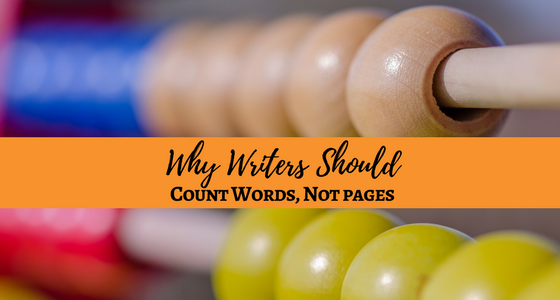Early on in my relationship with a new coaching client – often as early as our initial consultation call – I’ll ask about the targeted total word count for their manuscript.
Often the response I get is something along the lines of, “Oh, I don’t think in terms of word count. I just want the book to be about 300 pages long.”
This page count focused approach is a carryover from the world of reading, where we generally judge the length of a book by its number of pages. Makes sense, right?
As a writer, however, it’s important to switch your mindset over to tracking and measuring word count, not page count.
Here’s why…
The number of pages a book contains actually has nothing to do with the length of the book.
Don’t believe me?
Well, let me ask you this:
How many pages is the first Harry Potter book?
It should be an easy question to answer. Surely, you can pull the book off your bookshelf right now, flip to the last page, and you’ll have a factual answer.
But not so fast my magically inclined friend!
I’m Canadian. That means my edition of the book in question is called Harry Potter and the Philosopher Stone. If you’re American, your copy of the book doesn’t have the same name as mine; your version is called Harry Potter and the Sorcerer’s Stone.
You and I have different editions of the same book.
The title probably isn’t the only thing that’s different. There’s a good chances the page count differs as well.
This is because the number of pages a book contains changes depending on the edition of the book:
- This hardcover edition of Harry Potter and the Philosopher Stone from 1999 has 422 pages
- This paperback edition from 1998 has 309 pages
- This mass market American paperback edition from 2001 has 400 pages
- While this incredibly lovely illustrated edition has only 256 pages
Each edition has a different page count not because the length of the story has somehow changed, but because the number of pages a book contains is determined by that particular edition of the book’s internal formatting.
Choices concerning typeface and size of font, margin layout, location of running heads, and chapter headings all impact how many pages a book ends up containing.
Additional factors, like how a particular internal designer handles widows and orphans will also impact page count.
With ebooks, page counts get even wackier because readers are able to manually adjust the font size (i.e. number of words on each page) to their own personal preference at any time.
All the while, the book’s total number of words remains the same.
These formatting issues apply to your work-in-progress manuscripts, just as they do to published books. As your writing coach, if I ask you how much writing you did on your book this week and you respond, “Two pages.” I’m left wondering…
Were those two pages written in Scrivener, Microsoft Word, or Apple Pages?
Was the font you used Ariel or Times New Roman?
Was it single spaced or double spaced?
If it was handwritten, was it two pages of a small notebook or two sheets from a large legal pad?
Page count is just too malleable a variable to effectively track writing progress. If you want to go pro with your writing, start counting words. Leave the page counting to readers.
Need more help in tracking your writing progress? Read 4 Ways to Track Your Writing Progress.
FREE 4-Part Online Training Course for Aspiring Authors
Discover the Author Mindset Success Formula today and take your writing to the next level. Insert your name and email below for instant access:
I value your privacy and would never spam you







